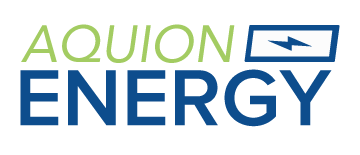The Role of DC Fast Chargers in Expanding EV Adoption
In the evolving landscape of sustainable transportation, electric vehicles (EVs) have moved from niche status to a driving force in the global mobility market. They are no longer seen as a novelty for environmentally conscious consumers but as a mainstream choice that blends performance, technology, and environmental responsibility. Automakers are investing heavily in models with longer ranges, competitive pricing, and cutting-edge features, while governments push forward with incentives and emissions targets.
Yet even with these advances, a major hurdle remains: charging convenience. In the business and utilities sector, this challenge is more than an infrastructure gap. It is a critical factor influencing consumer adoption rates, fleet investment decisions, and the broader integration of green energy solutions into everyday life. For urban residents without private parking, rural communities with limited power access, and commercial fleet operators on tight schedules, charging speed and accessibility can determine whether EV adoption feels practical or prohibitive.
This is where DC fast chargers become transformative. They are not just a technological upgrade; they represent a strategic intersection between sustainability, technology, and business innovation. By enabling rapid energy delivery in minutes rather than hours, they reshape public perception, reduce range anxiety, and accelerate the viability of EVs in both metropolitan and off-grid contexts. For stakeholders — from utilities and municipalities to renewable energy investors and property developers — DC fast chargers offer a scalable, future-ready solution that supports green mobility while opening new opportunities for revenue, customer engagement, and energy integration.
Why DC Fast Chargers Matter
DC fast chargers fundamentally alter the EV ownership experience by compressing charging time into a fraction of what AC chargers require. Unlike standard Level 2 chargers that can take several hours, DC fast chargers deliver direct current to the battery, bypassing the vehicle’s onboard converter and enabling rapid energy transfer. This makes them ideal for long-haul travelers, ride-share fleets, and commercial delivery operators who cannot afford prolonged downtime. For these users, charging speed is not a luxury—it is mission-critical.
The growing sophistication of these systems is evident in new market offerings. For example, ChargeTronix has introduced modular DC charging solutions designed for both scalability and reliability, serving clients across North and Latin America. Their latest designs employ distributed power cabinets capable of energizing multiple dispensers, enabling operators to tailor configurations for everything from highway rest stops to urban fleet depots. Such advancements not only increase uptime but also improve the user experience through integrated payment systems and thoughtful cord management. This kind of engineering directly supports the widespread deployment of high-quality DC fast chargers, which is essential to keeping pace with the accelerating EV market.
Infrastructure experts note that the impact of DC fast chargers extends beyond convenience. They influence purchasing decisions at the point of sale, where prospective buyers weigh their lifestyle against available charging solutions. When drivers know they can stop for a quick charge almost anywhere, the mental calculus shifts in favor of EVs. The result is a feedback loop: more chargers drive more EV sales, and more EVs justify the installation of additional chargers. This dynamic has already been observed in countries like Norway, where dense fast-charging coverage has propelled EVs to a majority market share.
The Economics of Speed
The economics of DC fast charging are both compelling and challenging. On one hand, faster chargers can generate higher revenue per location by serving more vehicles in less time. This operational efficiency appeals to businesses seeking a return on their infrastructure investment. On the other hand, the upfront costs for equipment, installation, and grid upgrades are significant. Site operators must weigh these expenses against projected utilization rates and long-term maintenance needs.
Energy demand charges further complicate the business case. High-powered chargers draw substantial electricity in short bursts, which can trigger costly peak-use fees from utilities. Some operators offset this with on-site battery storage, allowing them to store energy during off-peak hours and discharge it when demand spikes. Others pursue partnerships with energy providers to negotiate favorable rates or integrate renewable energy sources like solar canopies to supplement grid supply. These measures aim to improve profitability without compromising service speed.
Government incentives are helping to close the financial gap. In the United States, federal and state programs offer tax credits, grants, and low-interest loans for the installation of DC fast chargers in strategic locations. These incentives are particularly effective in encouraging deployment along designated alternative fuel corridors. With public and private investment converging, the cost curve for fast chargers is expected to decline over time, making them accessible to a wider range of operators.
Overcoming Infrastructure Challenges
Deploying DC fast chargers at scale requires navigating a complex web of logistical, regulatory, and technical challenges. One major hurdle is securing sufficient electrical capacity from local utilities, especially in rural or underserved areas. In some cases, the nearest substation may lack the infrastructure to handle the additional load, requiring costly upgrades or entirely new connections. Such projects can delay deployments by months or even years, particularly when multiple stakeholders are involved.
Permitting processes vary widely across jurisdictions, adding another layer of complexity. In certain municipalities, zoning laws and environmental impact assessments slow progress, while in others, streamlined approvals encourage rapid build-out. Industry advocates are pushing for greater regulatory harmonization to reduce these bottlenecks. A standardized permitting framework could shave months off installation timelines and lower administrative costs.
Technology can also play a role in overcoming these challenges. Advanced load management systems allow operators to distribute power dynamically among multiple chargers, reducing the strain on local grids. Similarly, modular designs enable incremental capacity increases without requiring a full rebuild of the site. By combining smart engineering with cooperative policy frameworks, stakeholders can accelerate the deployment of fast-charging infrastructure without compromising reliability.
DC Fast Charging and the Consumer Mindset
The presence of DC fast chargers can fundamentally reshape how consumers think about EV ownership. Early adopters often tolerated longer charging times out of environmental commitment or technological curiosity. Mainstream consumers, however, expect a level of convenience comparable to refueling at a gas station. Fast chargers meet this expectation, reducing perceived sacrifices and boosting confidence in the transition to electric mobility.
Location strategy plays a key role in shaping consumer perceptions. Chargers placed at retail centers, restaurants, and travel hubs turn charging into a seamless part of daily life. Drivers can top up while shopping or dining, reframing charging as an incidental activity rather than a disruptive chore. This convenience factor often outweighs the technical details of charging speed, influencing customer loyalty and repeat use.
Moreover, the integration of fast charging with digital platforms enhances the user experience. Mobile apps that display real-time charger availability, estimated wait times, and dynamic pricing empower drivers to make informed decisions. Loyalty programs and subscription models can further incentivize usage, creating a consumer ecosystem that encourages sustained EV adoption. By treating charging as a service rather than just an amenity, operators can build lasting relationships with their users.
Looking Ahead: The Future of Fast Charging
The expansion of DC fast-charging infrastructure is more than a convenience play. It is an essential step toward a sustainable transportation ecosystem. For EV adoption to continue its upward trajectory, charging solutions must align with consumer expectations for speed, accessibility, and reliability while supporting broader business and environmental goals.
From a business and utilities standpoint, fast chargers can be integrated into mixed-use developments, service stations, and retail centers, creating revenue-generating hubs that also strengthen customer loyalty. For green energy and sustainability initiatives, pairing DC fast chargers with renewable energy sources such as solar arrays or wind systems can help offset demand peaks, reduce grid strain, and improve overall energy resilience. In off-grid or remote living scenarios, hybrid systems combining battery storage, renewable generation, and DC charging can make EV use viable even in regions without robust grid connections.
As technology and innovation continue to advance, the next generation of chargers will bring higher power outputs, improved interoperability, and smarter load management, further reducing barriers to adoption. Governments and private investors have a critical role to play in incentivizing deployment, streamlining permitting, and ensuring equitable access across urban, suburban, and rural communities.
Ultimately, DC fast chargers serve as a catalyst for the entire clean transportation movement. They bridge the gap between sustainability ambition and practical user experience, supporting home renovations that include EV readiness, enabling fleet electrification in logistics, and empowering individuals to embrace zero-emission mobility without compromise. By viewing fast charging not just as infrastructure but as an integrated component of a smarter, greener energy future, we can accelerate the shift toward cleaner air, reduced carbon emissions, and resilient communities worldwide.

